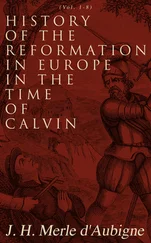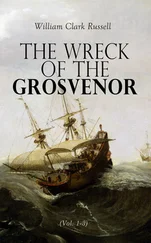William Clark - History of the Expedition under the Command of Captains Lewis and Clark, Vol. I.
Здесь есть возможность читать онлайн «William Clark - History of the Expedition under the Command of Captains Lewis and Clark, Vol. I.» — ознакомительный отрывок электронной книги совершенно бесплатно, а после прочтения отрывка купить полную версию. В некоторых случаях можно слушать аудио, скачать через торрент в формате fb2 и присутствует краткое содержание. Жанр: Путешествия и география, История, foreign_edu, foreign_antique, foreign_prose, на английском языке. Описание произведения, (предисловие) а так же отзывы посетителей доступны на портале библиотеки ЛибКат.
- Название:History of the Expedition under the Command of Captains Lewis and Clark, Vol. I.
- Автор:
- Жанр:
- Год:неизвестен
- ISBN:нет данных
- Рейтинг книги:5 / 5. Голосов: 1
-
Избранное:Добавить в избранное
- Отзывы:
-
Ваша оценка:
- 100
- 1
- 2
- 3
- 4
- 5
History of the Expedition under the Command of Captains Lewis and Clark, Vol. I.: краткое содержание, описание и аннотация
Предлагаем к чтению аннотацию, описание, краткое содержание или предисловие (зависит от того, что написал сам автор книги «History of the Expedition under the Command of Captains Lewis and Clark, Vol. I.»). Если вы не нашли необходимую информацию о книге — напишите в комментариях, мы постараемся отыскать её.
History of the Expedition under the Command of Captains Lewis and Clark, Vol. I. — читать онлайн ознакомительный отрывок
Ниже представлен текст книги, разбитый по страницам. Система сохранения места последней прочитанной страницы, позволяет с удобством читать онлайн бесплатно книгу «History of the Expedition under the Command of Captains Lewis and Clark, Vol. I.», без необходимости каждый раз заново искать на чём Вы остановились. Поставьте закладку, и сможете в любой момент перейти на страницу, на которой закончили чтение.
Интервал:
Закладка:
August 8. The next morning the Indians, with their six chiefs, were all assembled under an awning, formed with the mainsail, in presence of all our party, paraded for the occasion. A speech was then made, announcing to them the change in the government, our promises of protection, and advice as to their future conduct. All the six chiefs replied to our speech, each in his turn, according to rank: they expressed their joy at the change in the government; their hopes that we would recommend them to their great father (the president), that they might obtain trade and necessaries; they wanted arms as well for hunting as for defence, and asked our mediation between them and the Mahas, with whom they are now at war. We promised to do so, and wished some of them to accompany us to that nation, which they declined, for fear of being killed by them. We then proceeded to distribute our presents. The grand chief of the nation not being of the party, we sent him a flag, a medal, and some ornaments for clothing. To the six chiefs who were present, we gave a medal of the second grade to one Ottoe chief, and one Missouri chief; a medal of the third grade to two inferior chiefs of each nation: the customary mode of recognizing a chief, being to place a medal round his neck, which is considered among his tribe as a proof of his consideration abroad. Each of these medals was accompanied by a present of paint, garters, and cloth ornaments of dress; and to this we added a cannister of powder, a bottle of whiskey, and a few presents to the whole, which appeared to make them perfectly satisfied. The airgun too was fired, and astonished them greatly. The absent grand chief was an Ottoe named Weahrushhah, which, in English, degenerates into Little Thief. The two principal chieftains present were, Shongotongo, or Big Horse; and Wethea, or Hospitality; also Shosgusean, or White Horse, an Ottoe; the first an Ottoe, the second a Missouri. The incidents just related, induced us to give to this place the name of the Council-bluff; the situation of it is exceedingly favourable for a fort and trading factory, as the soil is well calculated for bricks, and there is an abundance of wood in the neighbourhood, and the air being pure and healthy. It is also central to the chief resorts of the Indians: one day's journey to the Ottoes; one and a half to the great Pawnees; two days from the Mahas; two and a quarter from the Pawnees Loups village; convenient to the hunting grounds of the Sioux; and twenty-five days journey to Santa Fee.
The ceremonies of the council being concluded, we set sail in the afternoon, and encamped at the distance of five miles, on the south side, where we found the musquitoes very troublesome.
August 4. A violent wind, accompanied by rain, purified and cooled the atmosphere last night; we proceeded early, and reached a very narrow part of the river, where the channel is confined within a space of two hundred yards, by a sand point on the north, and a bend on the south; the banks in the neighbourhood washing away, the trees falling in, and the channel filled with buried logs. Above this is a trading house, on the south, where one of our party passed two years, trading with the Mahas. At nearly four miles, is a creek on the south, emptying opposite a large island of sand; between this creek and our last night's encampment, the river has changed its bed, and encroached on the southern shore. About two miles further, is another creek on the south, which, like the former, is the outlet of three ponds, communicating with each other, and forming a small lake, which is fed by streams from the highlands. At fifteen miles, we encamped on the south. The hills on both sides of the river are nearly twelve or fifteen miles from each other; those of the north containing some timber, while the hills of south are without any covering, except some scattering wood in the ravines, and near where the creeks pass into the hills; rich plains and prairies occupying the intermediate space, and partially covered, near the water, with cottonwood. There has been a great deal of pumice stone on shore to-day.
August 5th. We set out early, and, by means of our oars, made twenty and a half miles, though the river was crowded with sandbars. On both sides the prairies extend along the river; the banks being covered with great quantities of grapes, of which three different species are now ripe; one large and resembling the purple grape. We had some rain this morning, attended by high wind; but generally speaking, have remarked that thunder storms are less frequent than in the Atlantic states, at this season. Snakes too are less frequent, though we killed one to-day of the shape and size of the rattlesnake, but of a lighter colour. We fixed our camp on the north side. In the evening, captain Clarke, in pursuing some game, in an eastern direction, found himself at the distance of three hundred and seventy yards from the camp, at a point of the river whence we had come twelve miles. When the water is high, this peninsula is overflowed, and judging from the customary and notorious changes in the river, a few years will be sufficient to force the main current of the river across, and leave the great bend dry. The whole lowland between the parallel range of hills seems formed of mud or ooze of the river, at some former period, mixed with sand and clay. The sand of the neighbouring banks accumulates with the aid of that brought down the stream, and forms sandbars, projecting into the river; these drive the channel to the opposite banks, the loose texture of which it undermines, and at length deserts its ancient bed for a new and shorter passage; it is thus that the banks of the Missouri are constantly falling, and the river changing its bed.
August 6. In the morning, after a violent storm of wind and rain from N.W. we passed a large island to the north. In the channel separating it from the shore, a creek called Soldier's river enters; the island kept it from our view, but one of our men who had seen it, represents it as about forty yards wide at its mouth. At five miles, we came to a bend of the river towards the north, a sandbar, running in from the south, had turned its course so as to leave the old channel quite dry. We again saw the same appearance at our encampment, twenty and a half miles distant on the north side. Here the channel of the river had encroached south, and the old bed was without water, except a few ponds. The sandbars are still very numerous.
August 7. We had another storm from the N.W. in the course of the last evening; in the morning we proceeded, having the wind from the north, and encamped on the northern shore, having rowed seventeen miles. The river is here encumbered with sandbars, but no islands, except two small ones, called Detachment islands, and formed on the south side by a small stream.
We despatched four men back to the Ottoes village in quest of our man, Liberte, and to apprehend one of the soldiers, who left us on the 4th, under pretence of recovering a knife which he had dropped a short distance behind, and who we fear has deserted. We also sent small presents to the Ottoes and Missouris, and requested that they would join us at the Maha village, where a peace might be concluded between them.
August 8. At two miles distance, this morning we came to a part of the river, where there was concealed timber difficult to pass. The wind was from the N.W. and we proceeded in safety. At six miles, a river empties on the northern side, called by the Sioux Indians, Eaneahwadepon, or Stone river; and by the French, Petite Riviere des Sioux, or Little Sioux river. At its confluence it is eighty yards wide. Our interpreter, Mr. Durion, who has been to the sources of it, and knows the adjoining country, says that it rises within about nine miles of the river Desmoines; that within fifteen leagues of that river it passes through a large lake nearly sixty miles in circumference, and divided into two parts by rocks which approach each other very closely: its width is various: it contains many islands, and is known by the name of the Lac d'Esprit: it is near the Dogplains, and within four days march of the Mahas. The country watered by it, is open and undulating, and may be visited in boats up the river for some distance. The Desmoines, he adds, is about eighty yards wide where the Little Sioux river approaches it: it is shoaly, and one of its principal branches is called Cat river. Two miles beyond this river is a long island which we called Pelican island, from the numbers of that animal which were feeding on it: one of these being killed, we poured into his bag five gallons of water. An elk, too, was shot, and we had again to remark that snakes are rare in this part of the Missouri. A meridian altitude near the Little Sioux river made the latitude 41° 42' 34". We encamped on the north, having come sixteen miles.
Читать дальшеИнтервал:
Закладка:
Похожие книги на «History of the Expedition under the Command of Captains Lewis and Clark, Vol. I.»
Представляем Вашему вниманию похожие книги на «History of the Expedition under the Command of Captains Lewis and Clark, Vol. I.» списком для выбора. Мы отобрали схожую по названию и смыслу литературу в надежде предоставить читателям больше вариантов отыскать новые, интересные, ещё непрочитанные произведения.
Обсуждение, отзывы о книге «History of the Expedition under the Command of Captains Lewis and Clark, Vol. I.» и просто собственные мнения читателей. Оставьте ваши комментарии, напишите, что Вы думаете о произведении, его смысле или главных героях. Укажите что конкретно понравилось, а что нет, и почему Вы так считаете.












